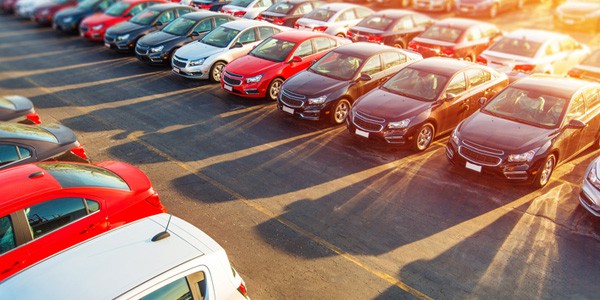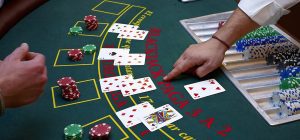What do car dealerships do with unsold cars?

As young kids, we have always been mesmerized by the rows and rows of shiny vehicles that are showcased on a dealership’s lot. However, as we grow older, the mind gets intrigued by the enormous display of cars that are often seen on the dealer’s lot. A genuine question comes to every car enthusiast’s mind- What happens to all the cars that don’t get sold from the dealership?
Sometimes, even the likes of experienced car enthusiasts who have known the automotive industry for decades marvel at all the brand new cars, trucks, and SUVs that sit like idle ducks on the new car dealer’s lot. The average consumer may wish that the dealership gave away all the unsold cars for free.
While this may indeed be a distant dream, we are actually here to inform you of what the dealership does with their unsold Jeep Cherokee or any other cars. For starters, you need to get the basic information of how the car industry works in the US.
How do car sales work
For starters, every car enthusiast should know that car manufacturers aren’t permitted to sell their vehicles directly to consumers. Traditionally, car manufacturers are prohibited from products to the public directly in many states. Thus, the only resort for car manufacturers is to sell their stock to franchised dealerships. These franchised dealerships, in turn, sell these cars to the general public.
Thus, you can see the car selling process in this way- the dealers are the automakers’ customers while the regular car buyers are the dealers’ customers. Car dealers send the money generated by the car sales to the car manufacturers and get their fair share of commission based on the number of cars sold.
This conveys that unsold cars or to put it in better perspective ‘slow-selling cars’ are the individual problem of dealers alone. The manufacturer is under no pressure in this situation, as the dealers cannot send the unsold cars back to them for a refund. The only solution for dealers is to move the slow-selling car from their lot somehow. Dealers are under high pressure to sell every car they have in their lot that they bought from the manufacturer they represent.
There are 2 factors that put high pressure on dealers to sell these slow-selling cars quickly. One of these is the physical area they have available on their car lots. A non-selling car ends up occupying the space on the dealer’s lot for a long while. Here, dealers miss the opportunity to replace its slot with a profitable car that sells quickly. Just like grocery stores, dealers don’t want to decorate their lots with non-profitable cars.
The other factor is that most dealers don’t buy the bulk amount of cars from the manufacturer using outright cash. Instead, they finance them. Thus, each unsold car on the dealer’s lot carries an interest rate behind it. In the industry, this scenario is termed ‘floor planning.’ The saying ‘Time is money’ heavily implies this situation. The longer the car sits idle in the dealer’s lot, the larger the amount of money the dealer has to incur.
How do dealers sell unsold cars?
The above analysis tells you that car dealers are more motivated to sell the unsold cars that are taking up space in their inventories. The dealers are losing a lot of money the longer the car occupies the space, as it is preventing a potentially more profitable car from sitting in its place. The dealer misses out on a decent return. To quickly speed up the slow-selling car inventory sales, dealers offer special cash incentives to customers to sweeten up the deal.
This clearly explains why the salespersons at the dealership try to convince you to buy some other car at their dealership, even though it has nothing to do with what you told them that you are looking for. The dealership makes the deal even more enticing by offering large discounts on a slow-selling car rather than a quick-moving car.
The manufacturer takes its own steps to ensure that its vehicles sell more. If the dealer manages to sell more units of the less popular vehicles, the manufacturer ultimately benefits in the long run. For this purpose, manufacturers offer various incentives like cashback offers, special subsidized lease deals, and zero-percent or other low-interest-rate financing deals to make their product more desirable to the consumer.
Another gambit that dealers can undertake is putting the slow-selling car into use as a loaner car that can be used by customers of the service department. Similarly, they can also use the car as a ‘demonstrator vehicle’ that can be used by dealership personnel as everyday transportation. This way, the slow-selling new car transitions into a nearly-new used vehicle. The dealer can now sell this car in the high-demand used car market at a substantial discount from the MSRP.
In some scenarios, the dealer trades the slow-selling vehicles with other dealers in different regions where the slow-selling vehicle can be a popular choice. The preference for vehicles changes dramatically depending on the region. For instance, 4WD vehicles don’t sell that much in the Southeast. Instead, these vehicles sell profitably in the Upper Midwest and New England.
If none of the above measures work, the ultimate resort for dealers is to sell the unsold inventory at an auto auction. Many areas in the US usually conduct auto auctions. New and used car dealers use these as a platform to offload those vehicles that just don’t seem to pique the interest of any customer. While the dealer may be losing a lot of money in this process, he can finally breathe a sigh of relief after unloading the slow-moving cars.
Conclusion
Where there is a will there’s a way. Similarly, if you ever wondered what happened to the cars that remain unsold on a dealership lot, the dealers do eventually find a way to sell and unload them. Although some cars won’t sell in a particular time frame, they do find a buyer by taking a different route. Eventually, all cars in the dealership get sold in one way or another, regardless of the price.

“Evil coffee nerd. Analyst. Incurable bacon practitioner. Total twitter fan. Typical food aficionado.”











